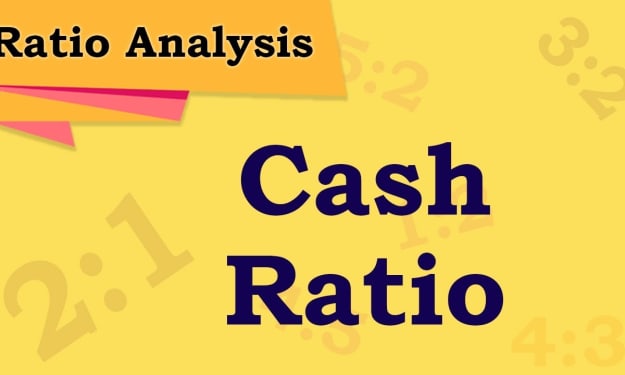What is the PEG ratio and how is it used in investment analysis?
Understanding the PEG Ratio: A Guide for Investors

Introduction:
The PEG ratio is a financial ratio that is used to determine the value of a company's stock. This ratio takes into account the company's earnings growth rate and is used as an alternative to the traditional P/E ratio. In this article, we will discuss the PEG ratio in detail, including how it is interpreted, its limitations, and how it can be used in investment analysis.
Interpreting the PEG Ratio:
The PEG ratio is calculated by dividing the P/E ratio by the expected growth rate of a company's earnings. The formula for calculating the PEG ratio is as follows:
PEG Ratio = P/E Ratio / Expected Earnings Growth Rate
A PEG ratio of 1 is considered to be fairly valued, while a PEG ratio below 1 is considered to be undervalued, and a PEG ratio above 1 is considered to be overvalued. Therefore, the lower the PEG ratio, the more attractive the stock is to investors.
Limitations of the PEG Ratio:
While the PEG ratio is a useful tool for investors, it does have its limitations. One limitation is that it relies on analysts' earnings growth estimates, which can be inaccurate. Additionally, the PEG ratio does not take into account macroeconomic factors that may impact a company's earnings growth, such as changes in interest rates, inflation, or government policies.
Another limitation of the PEG ratio is that it is not comparable across different industries. Different industries have different levels of earnings growth, and what may be considered a high or low PEG ratio in one industry may be different in another.
How to Use the PEG Ratio in Investment Analysis:
Investors use the PEG ratio to identify stocks that are undervalued or overvalued. A low PEG ratio suggests that the stock is undervalued, while a high PEG ratio suggests that the stock is overvalued. However, investors should not rely solely on the PEG ratio when making investment decisions.
It's essential to conduct thorough research and analysis of a company's financial statements, industry trends, and macroeconomic factors before making an investment decision. Additionally, investors should compare a company's PEG ratio to its competitors and industry averages to determine if the stock is relatively undervalued or overvalued.
Example:
Let's take a look at an example to illustrate how the PEG ratio works. Company ABC has a P/E ratio of 20 and an expected earnings growth rate of 10%. To calculate the PEG ratio for Company ABC, we can use the formula above:
PEG Ratio = 20 / 10 = 2
A PEG ratio of 2 suggests that the stock is overvalued, and investors may want to avoid it. In contrast, if Company XYZ has a P/E ratio of 20 and an expected earnings growth rate of 20%, its PEG ratio would be:
PEG Ratio = 20 / 20 = 1
A PEG ratio of 1 suggests that the stock is fairly valued, and investors may want to consider buying it.
here are some more points to consider when using the PEG ratio in investment analysis:
The PEG ratio should not be used as the sole indicator of a company's valuation. It is important to consider other financial metrics, such as price-to-earnings ratio (P/E), price-to-sales ratio (P/S), and price-to-book ratio (P/B), to get a more comprehensive picture of a company's valuation.
The PEG ratio is best used for companies with consistent and predictable earnings growth. Companies that are experiencing rapid changes in earnings growth or have unstable earnings may not be suitable for analysis using the PEG ratio.
The PEG ratio can also be used to compare companies within the same industry. For example, if two companies in the same industry have similar P/E ratios but one has a higher PEG ratio, it may indicate that the market expects the company with the higher PEG ratio to grow faster in the future.
It is important to remember that the PEG ratio is based on estimates and projections, which may not always be accurate. Therefore, investors should exercise caution when using the PEG ratio as a tool for investment analysis.
Example:
Let's take a look at an example to illustrate how the PEG ratio works. Company XYZ has a P/E ratio of 20 and a projected earnings growth rate of 10%. To calculate the PEG ratio, we divide the P/E ratio by the projected earnings growth rate:
PEG Ratio = P/E Ratio / Projected Earnings Growth Rate
= 20 / 10 = 2
This means that the company has a PEG ratio of 2. A PEG ratio of 2 suggests that the company may be overvalued, as its price is growing faster than its earnings. However, if we compare this to the PEG ratio of other companies in the same industry and find that it is in line with or lower than their PEG ratios, then the company may not be overvalued after all.
Summarise
The PEG ratio is a bit more complicated than some of the other financial ratios, but I'll do my best to explain it in a way that's easy for kids to understand.
The PEG ratio is a way to measure the value of a company's stock. It takes into account the company's earnings, or how much money they make, and their growth rate, or how quickly they are growing. The PEG ratio is calculated by dividing a company's price-to-earnings (P/E) ratio by their growth rate. Here's an example to help explain:
Let's say there's a company called ABC that has a P/E ratio of 20. That means that for every $1 of earnings, people are willing to pay $20 for the stock. Now let's say that ABC is growing at a rate of 10% per year. To calculate the PEG ratio, we divide the P/E ratio by the growth rate:
PEG Ratio = P/E Ratio / Growth Rate
PEG Ratio = 20 / 10
PEG Ratio = 2
So ABC has a PEG ratio of 2. A PEG ratio of 1 is considered "fairly valued," meaning that the stock price is in line with the company's earnings growth. A PEG ratio less than 1 is considered "undervalued," meaning that the stock price may be lower than it should be given the company's growth rate. A PEG ratio higher than 1 is considered "overvalued," meaning that the stock price may be higher than it should be given the company's growth rate.
Conclusion
The PEG ratio is a financial tool that helps people figure out if a company's stock is worth buying. It looks at how fast a company's earnings are growing and compares it to the price of the stock. If the PEG ratio is low, it means the stock might be a good deal, but if it's high, it might be too expensive. However, people shouldn't rely only on the PEG ratio to make investment decisions. They need to look at other things too, like how the company is doing in its industry and how the economy is doing. The PEG ratio is just one part of figuring out if a stock is worth buying.
About the Creator
Tag Business
I Will Providing Various Company Information
Enjoyed the story? Support the Creator.
Subscribe for free to receive all their stories in your feed. You could also pledge your support or give them a one-off tip, letting them know you appreciate their work.






Comments
There are no comments for this story
Be the first to respond and start the conversation.